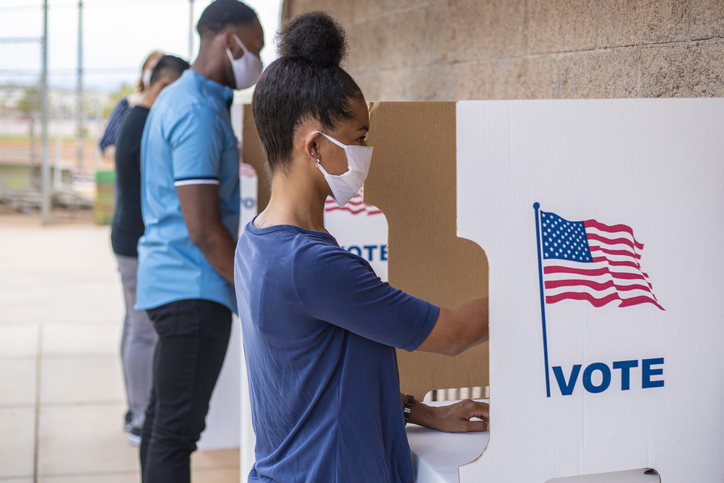
Contributor: Stephanie Digeon-Heath , Client Services, The Media Audit
On November 3, 2020, Americans will head to the poll and decide whether to reelect Trump or whether to elect former Vice President Biden as president. For loyal supporters of either candidate, their minds are most likely made-up. However, this may not be true for all Independents. Independents are thus considered pivotal voters. “Presidential general elections are generally determined by two factors: the size and relative enthusiasm of each major party’s base, and which way the swing voters in the middle go,” said Charlie Cook, a political analyst and founder of The Cook Political Report, a nonpartisan online newsletter. The closer the race, the more pivotal Independents voters become.
According to Pew Research Center, nearly four in ten U.S. adults (38%) identify as politically independent. The research center goes on to explain that 34% of these Independents actually lean Republican and 45% lean toward the Democrats, leaving 21% of Independents up for grabs.
Many pundits and political analysts feel that the race will be the tightest in swing states. Election analytics website FiveThirtyEight identifies the states of Colorado, Florida, Iowa, Michigan, Minnesota, Nevada, New Hampshire, North Carolina, Ohio, Pennsylvania, Virginia and Wisconsin as “perennial” swing states that have regularly seen close contests over the last few presidential campaigns.
Detroit is the largest metro inside Michigan – a swing state as noted above. In a Detroit Spring 2020 study, The Media Audit found that 1.78 million, or 47.5%, of Detroit adults voted in an election in the past year. Half of Detroit’s greater metro area adults identify as Independent, yet only 44% of voters were Independent. This lower level of voter participation is not surprising, given that Pew Research Center recognizes that “true independents” have a lower engagement in politics.
The profile of Detroit independents looks very similar to the national profile described by Pew Research Center. They skew slightly male and are younger. In fact, in Detroit, over 61% belong either to the Millennials or the Generation X cohorts. Lastly, though 44% have either a four-year or post-graduate degree, they are slightly less likely than registered Democrats to have a college degree.
(Click the image to enlarge it)
Radio is a great vehicle to reach all voters, regardless of their political affiliation. Daily, more minutes are spent listening to radio than watching broadcast TV or cable. In Detroit, local terrestrial radio stations reach 74% of liberals, 77% of conservatives and 72% of independents. Additionally, potential voters spent much more time daily listening to radio than watching broadcast TV or cable TV. Detroit liberals listen to radio for 156 minutes, conservatives listen for 133 minutes, and those that neither identify as liberal nor conservative listen for 129 minutes daily.
(Click the image to enlarge it)
The concept of using multimedia in a very limited, but highly efficient, marketing effort is called “narrowcasting” (as opposed to “broadcasting”). Radio is uniquely able to narrowcast or transmit targeted messages to a comparatively localized or specialized audience. Perhaps, that is why a study by American Politics Research believes that the narrowcasting that is possible with highly targeted radio ads may explain why more campaigns use radio than television ads.



